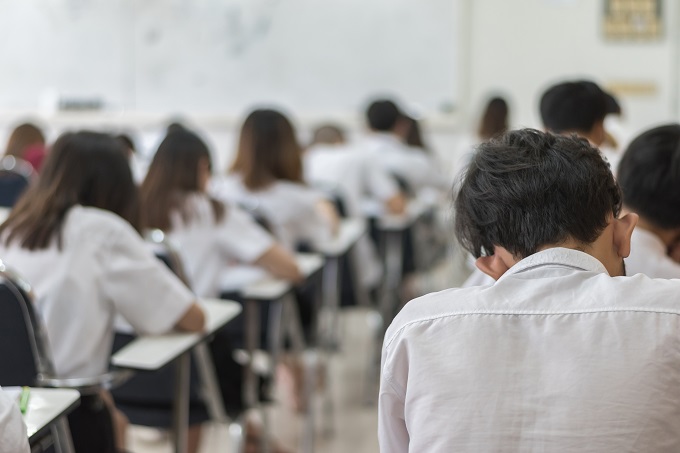
The government’s new structure for the National Certificate of Educational Achievement (NCEA) will increase the proportion of externally assessed learning units from 30 per cent to 50 per cent.
The government says the changes will reduce pressure on students and teachers.
The new system reduces the number of learning units available to around 20 credits in four “chunks” per subject, or a maximum of 100 or 120 credits for five or six subjects, at each level. It also “rebalances” the number of credits available for internally and externally-assessed achievement standards to a 50:50 split.
The proportion of internally-assessed credits had increased to 70 per cent over the past 17 years. The move will will increase external assessments such as exams, while lowering the need for internal assessment.
Mangere College principal Tom Webb told Morning Report the shift was welcome, as it reduced unnecessary overload.
“We think overall, they’re really positive changes. Reducing the over-assessment of students and workload for teachers is really important,” he said.
“I actually think we are losing the opportunity for more creative, integrated courses.” – principal of Albany Senior High School, Claire Amos duration 4:55
from Morning Report
Click a link to play audio (or right-click to download) in either
MP3 format or in OGG format.
However, Albany Senior High School principal Claire Amos said the potential for reducing over-assessment and workloads was being over-estimated and that the move reduced options for students.
“I actually think we are losing the opportunity for more creative, integrated courses, which meant that we were assessing students in more meaningful and contextualised ways,” she told Morning Report.
“As much as it sounds like a simple solution to push half of the assessments to external to deal with teacher workloads, I think we’ve got to be mindful of the fact that teachers do a whole lot of work to prepare those young people for external assessment… So I don’t think it’s as simple as it looks.”
Mr Webb said external assessment didn’t have to be through examinations and could take the form of student portfolios, as was already the case within the subject of art.
Ms Amos said there was also a danger teachers could end up marking external examination papers and portfolios when they had free time to do so. Regarding the underachievement of Maori and Pasifika students, she said the plans wouldn’t address the issue.
The plan also includes NCEA fees being scrapped, and a renewed emphasis on literacy and numeracy.
The much-delayed English draft curriculum is now out for consultation, generating discussion from teachers.
Research from AUT demonstrates arts, culture and recreation have positive impacts on all aspects of…
How effective has the school phone ban been in achieving its aims? Researchers from the…
School camps and excursions deliver hands on learning experiences, helping to consolidate classroom learning.
Innovations in AV technologies present new opportunities to engage with students. We look at how…
A new report from the University of Auckland’s Our Voices Project asks young people what…
This website uses cookies.